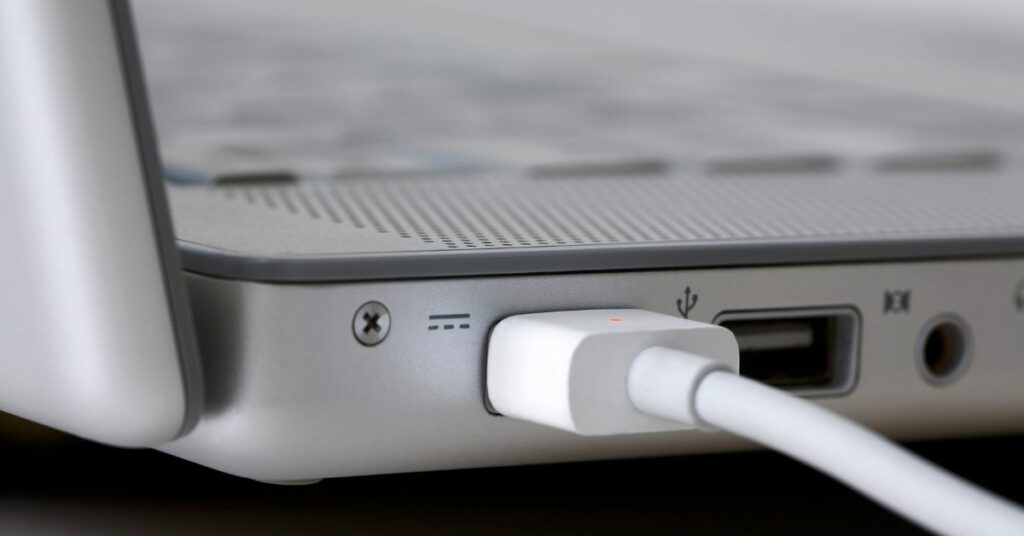In today’s world, laptops have become an essential part of our lives, whether we use them for work, entertainment, or communication. With the increasing need to stay connected on-the-go, it has become crucial to have a reliable source of power to keep our laptops charged.
Inverter technology has provided us with an alternative source of power to charge laptops when we are away from traditional power sources like electrical outlets.
In this article, we will discuss the question of whether we can charge laptops with an inverter, how to do it, and the advantages and disadvantages of using an inverter to charge a laptop.
Understanding Inverters
Before we dive into whether an inverter can charge a laptop or not, it is essential to understand what an inverter is and how it works.
An inverter is an electronic device that converts direct current (DC) to alternating current (AC). DC is the type of electrical current that is produced by batteries, solar panels, or other DC sources, while AC is the type of electrical current that is used by most electrical appliances, including laptops.
Inverters are commonly used in cars, RVs, and boats to convert the DC power produced by the vehicle’s battery to AC power to operate appliances.
There are three types of inverters: pure sine wave inverters, modified sine wave inverters, and square wave inverters.
Pure sine wave inverters produce a smooth and clean AC power output similar to the power that comes out of a regular electrical outlet, making them ideal for sensitive electronics like laptops.
Modified sine wave inverters produce an output that is similar to the shape of a square wave.
Square wave inverters produce a waveform that is square-shaped.
These types of inverters are less expensive than pure sine wave inverters but may produce electrical interference that can damage sensitive electronics.
Power Requirements of Laptops

The power consumption of a laptop depends on its model, brand, and usage. Laptops typically have a power rating that ranges from 30 watts to 120 watts.
To determine the charging requirements for your laptop, you need to check the power rating of your laptop’s battery and the voltage of your laptop’s charger. Most laptop batteries have a voltage rating of 11.1 volts or 14.8 volts, while most laptop chargers have an output voltage of 19 volts.
When charging a laptop, the battery charges in two stages: the constant current stage and the constant voltage stage.
In the constant current stage, the charger supplies a constant current to the battery, which charges the battery quickly.
In the constant voltage stage, the charger supplies a constant voltage to the battery, which charges the battery slowly until it is fully charged.
Charging a Laptop with an Inverter
To charge a laptop with an inverter, you need to ensure that the inverter is compatible with your laptop. You should check the power rating of your laptop’s battery and the voltage of your laptop’s charger to determine the wattage of the inverter you need. The inverter’s wattage should be higher than the laptop’s wattage to ensure that it can supply enough power to charge the laptop’s battery.
To connect the inverter to the laptop, you need to use a power cord that is compatible with both the inverter and the laptop. Most laptops have a DC input that is compatible with a car charger, which you can use to connect the inverter to the laptop. Some inverters also come with USB ports that you can use to charge your laptop.
When charging a laptop with an inverter, it is essential to take precautions to avoid damaging the laptop or the inverter. You should ensure that the inverter is on a stable surface and that the ventilation holes are not blocked to prevent overheating. You should also avoid overloading the inverter by connecting too many devices to it, as this can cause the inverter to shut down or even damage it. Additionally, it is recommended to use a surge protector to protect your laptop from power surges and voltage fluctuations that can occur when using an inverter.
To calculate the run time of the inverter when charging a laptop, you need to know the inverter’s battery backup capacity and the laptop’s wattage. The battery backup capacity refers to the amount of time the inverter can run at a certain wattage before it runs out of power.
For example, if you have a 500-watt inverter with a battery backup capacity of 3 hours, and your laptop consumes 60 watts, then the inverter will be able to power the laptop for 3 hours.
Choosing the Right Inverter for Laptop Charging
When selecting an inverter for charging a laptop, several factors need to be considered, such as the power requirements of the laptop and inverter, the inverter’s size and portability, and the inverter’s battery backup capacity.
It is essential to choose an inverter that can supply enough power to charge your laptop’s battery and that is compatible with your laptop’s voltage and power rating. Additionally, you should consider the inverter’s size and portability, as you may need to carry it with you when traveling.
Another crucial factor to consider when choosing an inverter is its battery backup capacity. Inverters with a higher battery backup capacity can power your laptop for a more extended period, giving you more time to work or watch videos.
However, inverters with a higher battery backup capacity may be more expensive and heavier than those with a lower capacity.
Advantages and Disadvantages of Charging a Laptop with an Inverter
Charging a laptop with an inverter has several advantages and disadvantages. One advantage is that it allows you to charge your laptop when you are away from traditional power sources, making it ideal for people who travel frequently or work remotely. Inverters are also relatively affordable, and they can be used to power other electronic devices besides laptops.
However, using an inverter to charge a laptop also has some disadvantages. One disadvantage is that it may be less efficient than charging the laptop using a regular electrical outlet, as the inverter may consume some power while converting DC to AC.
Additionally, inverters may produce electrical interference that can damage sensitive electronics like laptops, especially if they are not pure sine wave inverters.
Safety Considerations
When using an inverter, it is essential to take precautions to ensure your safety and the safety of your electronic devices. One precaution is to avoid overloading the inverter, as this can cause it to shut down or even damage it. You should also ensure that the inverter is on a stable surface and that the ventilation holes are not blocked to prevent overheating.
Another safety tip is to use a surge protector to protect your laptop from power surges and voltage fluctuations that can occur when using an inverter. Additionally, you should avoid touching the inverter’s components when it is in operation, as they may be hot and can cause burns.
How to Avoid Overloading an Inverter
To avoid overloading an inverter, you should ensure that the total wattage of the devices connected to the inverter does not exceed the inverter’s wattage rating. For example, if you have a 500-watt inverter, you should not connect devices that consume more than 500 watts. Additionally, you should not connect too many devices to the inverter at once, as this can cause it to overload.
Conclusion
In conclusion, an inverter can be used to charge a laptop when you are away from traditional power sources.
However, it is essential to ensure that the inverter is compatible with your laptop and that it has enough battery backup capacity to power your laptop for the required amount of time.
It is also crucial to take safety precautions, such as avoiding overloading the inverter and using a surge protector to protect your laptop from power surges and voltage fluctuations.
When choosing an inverter for charging your laptop, consider factors such as the inverter’s wattage rating, battery backup capacity, size, and portability.
Additionally, be aware of the advantages and disadvantages of using an inverter to charge your laptop and take the necessary safety precautions to protect yourself and your electronic devices.
By following these tips and guidelines, you can successfully use an inverter to charge your laptop and stay productive even when you are away from traditional power sources.
Thank you for reading! 🙂









